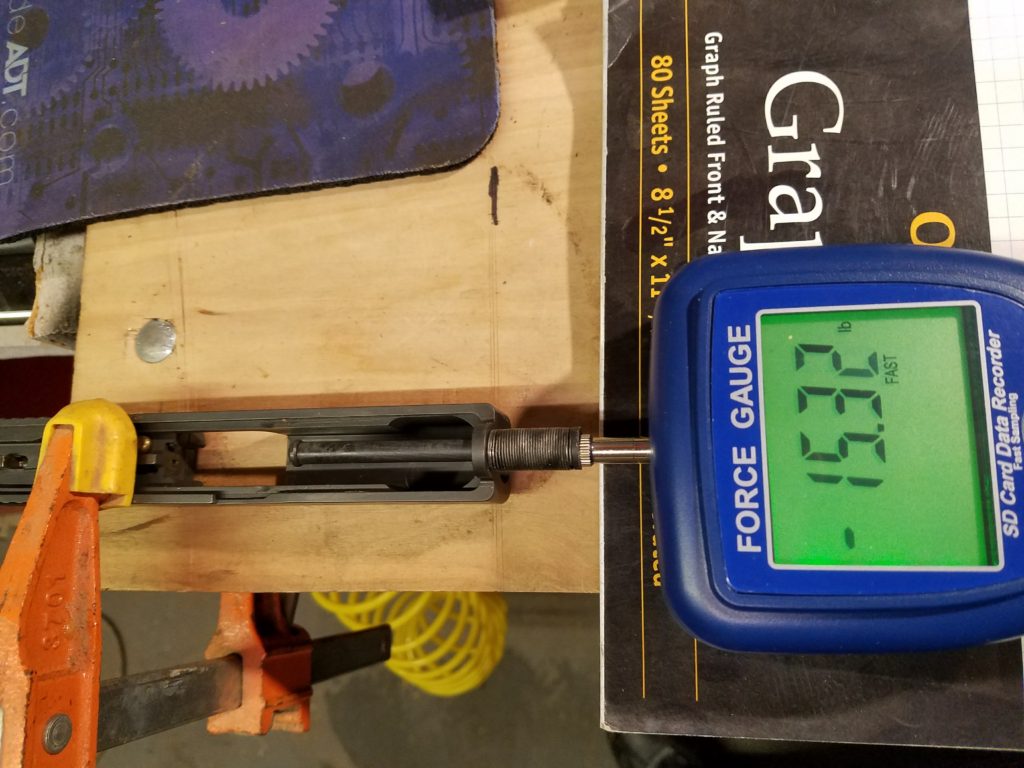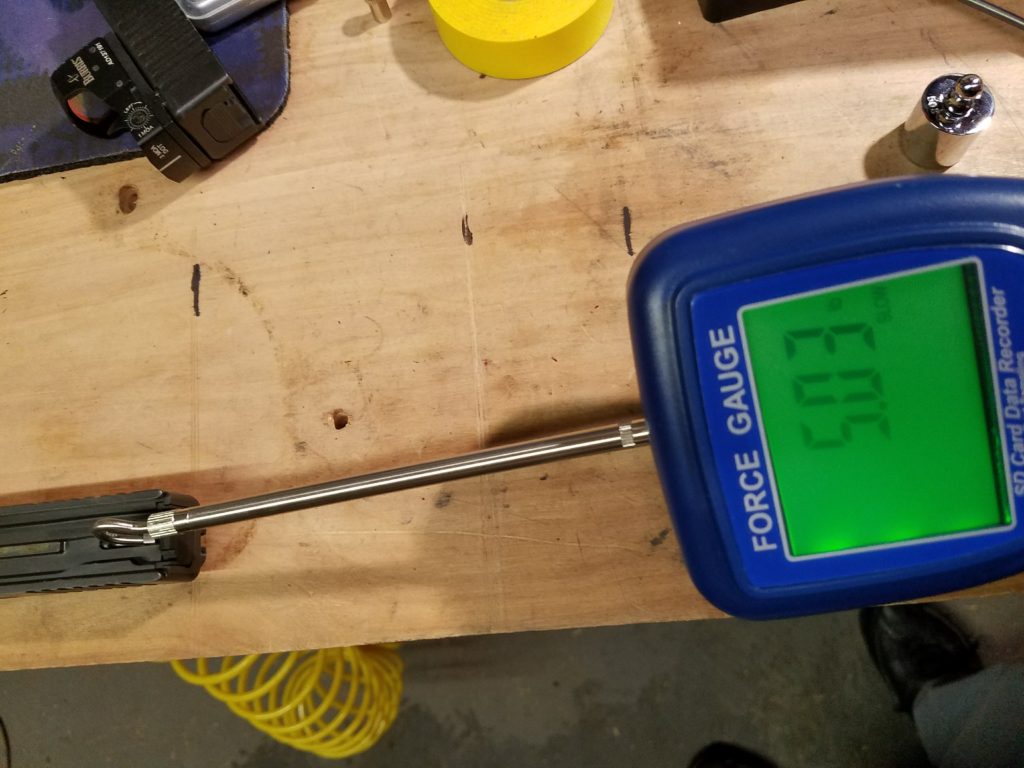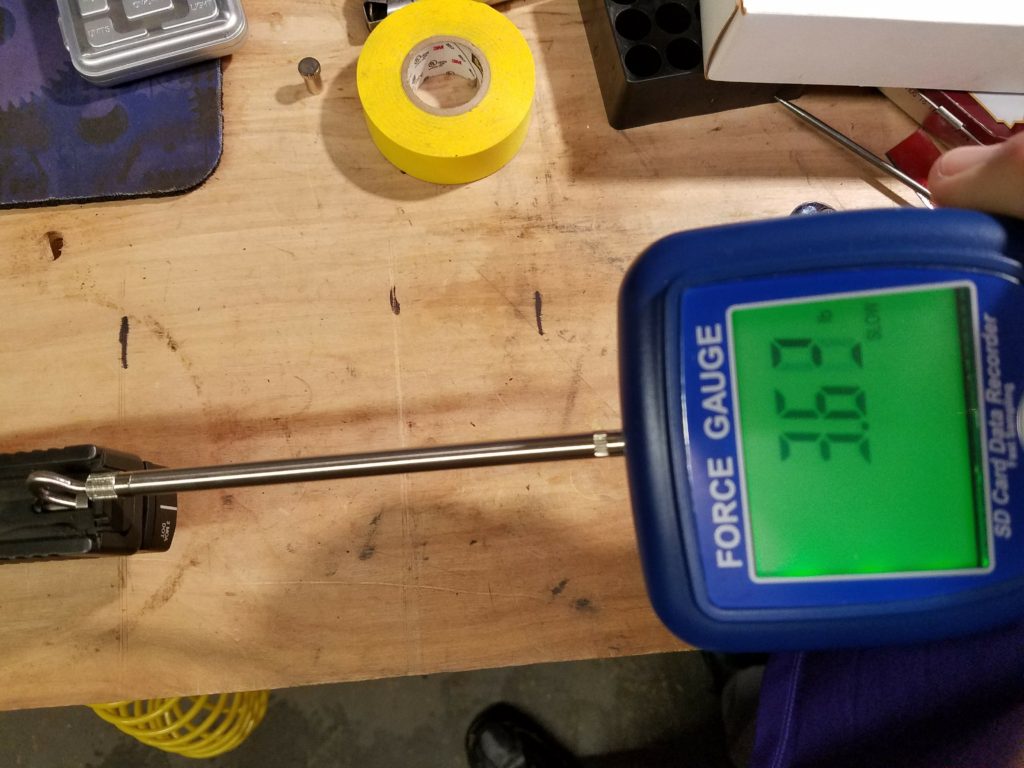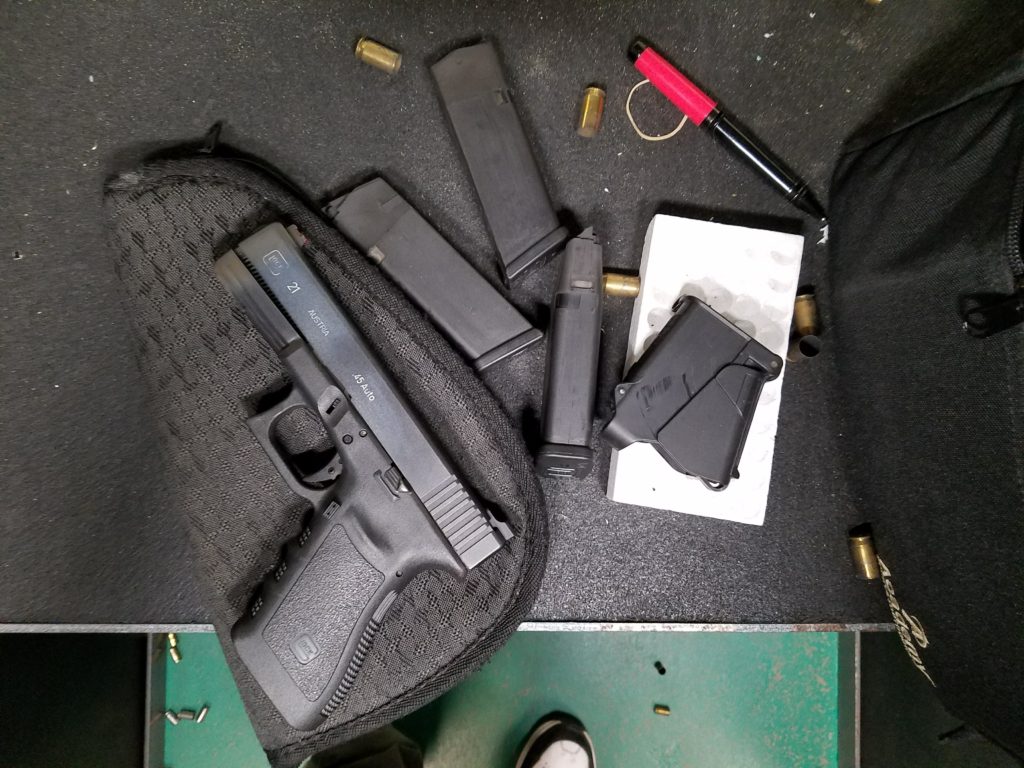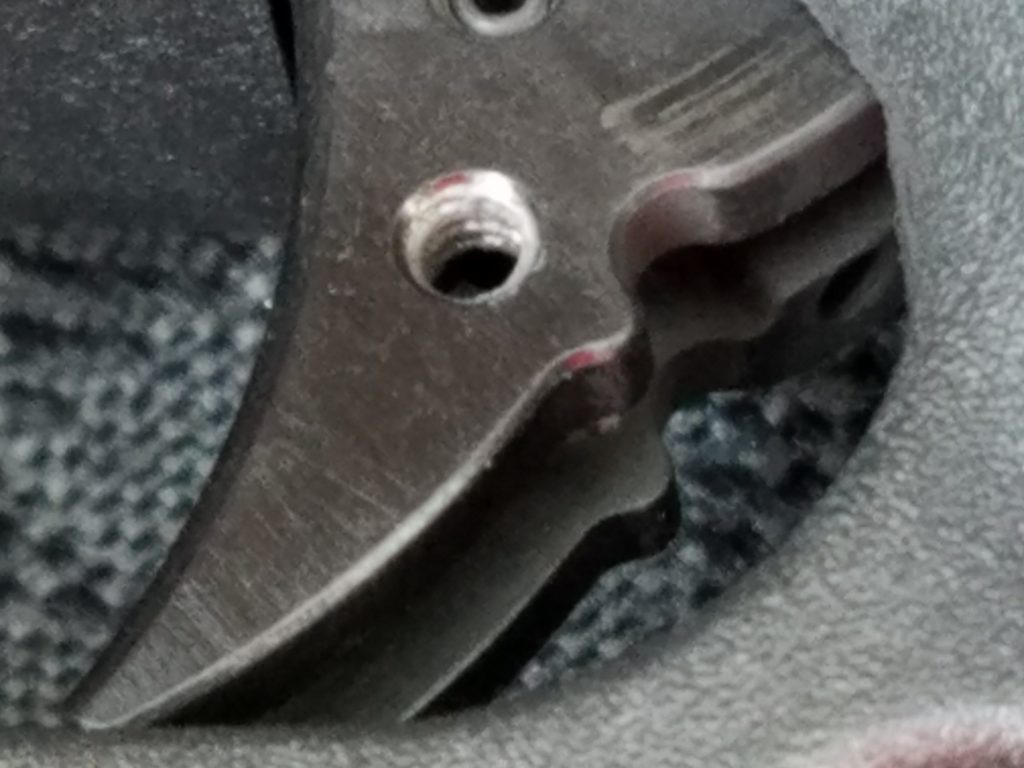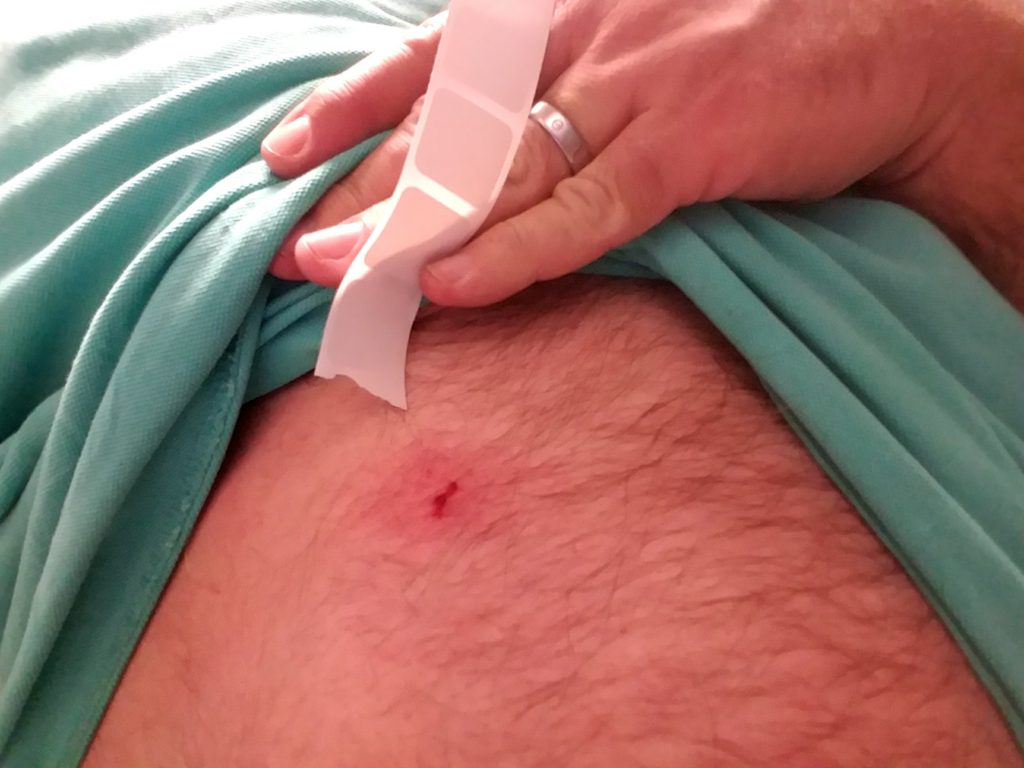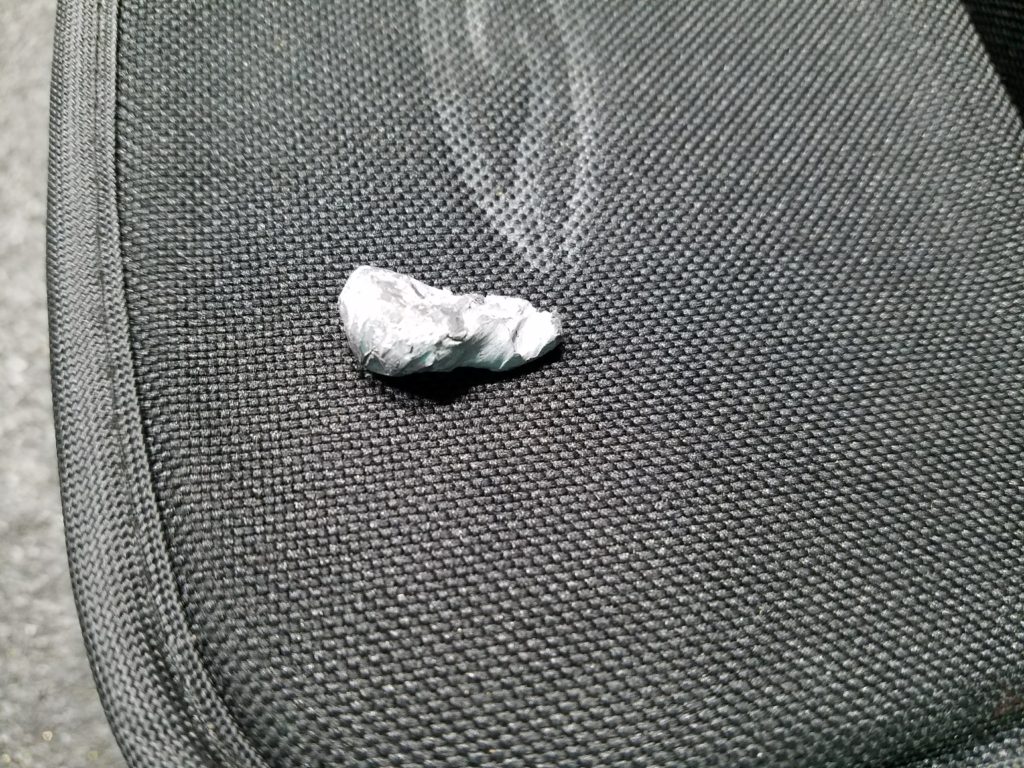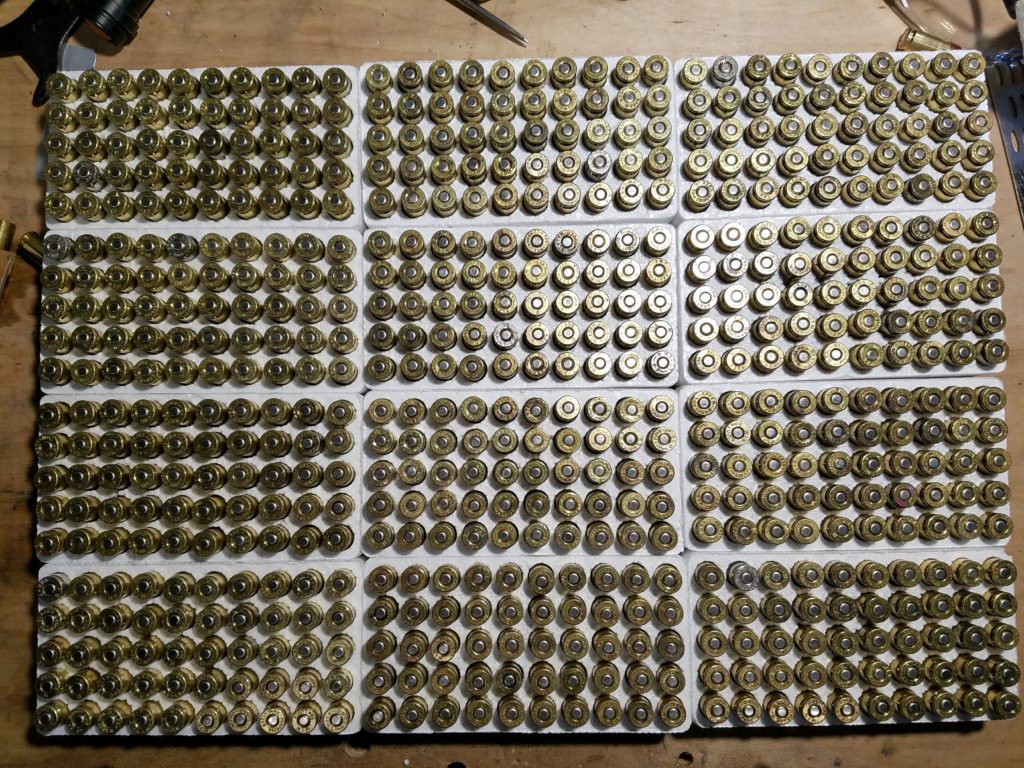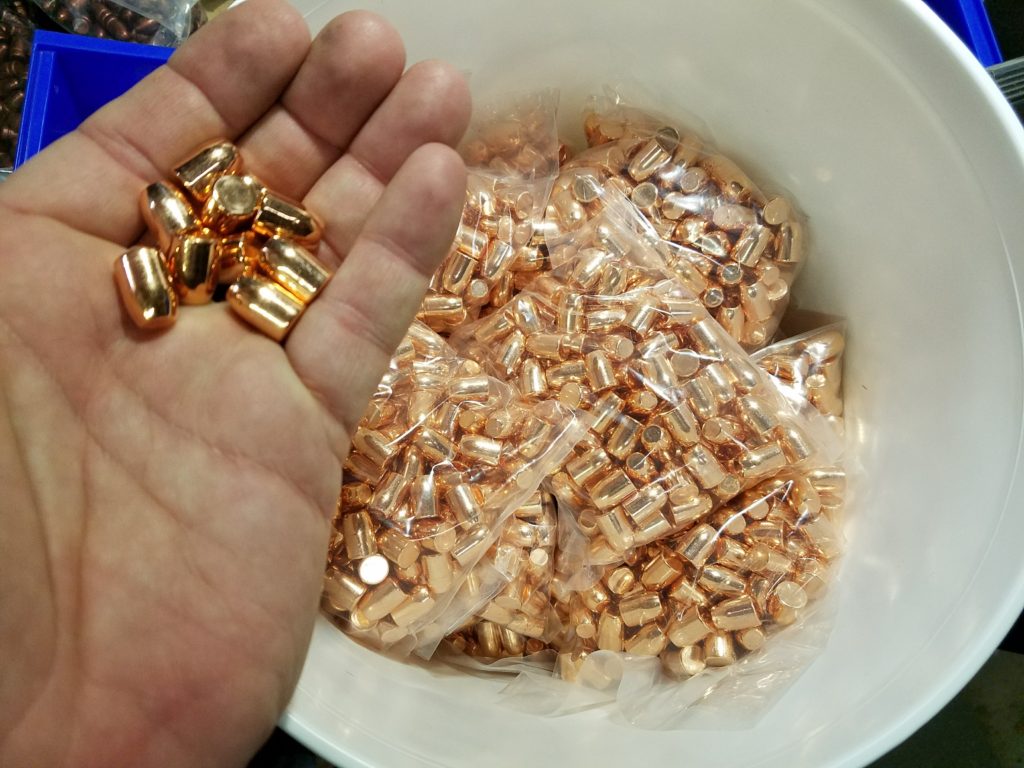I mentioned in a previous post a while back that I acquired a Reed SD-6020 force gauge. It is a fun and interesting tool. I have used it mostly for measuring springs thus far.
I have a workable technique for measuring captive recoil springs a la Glock. I clamp a Glock slide my workbench then put a spacer under the force gauge such that the sensor is reasonably level with the hole in the slide. In this case, a tablet of graph paper I have is the right size. Then I can slide the gauge back and forth compressing the spring and read the weight.
Here a stock Glock spring, with its plastic guide rod, rings out at 15.32 pounds. To take this measurement, I compress the spring until it locks solid, then back off a hair. Yes, a hair, enough to tell that the spring is no longer compressed completely, a small fraction of a millimeter. This seems to be the valid place to measure because it corresponds with the maximum 2 inches of travel that the slide does when installed on the pistol.
I have several aftermarket springs with stainless steel guide rods. At first, I bought stock weight springs. Then I started handloading specifically to soft recoil and found I needed lighter springs to tune the pistol to run the lighter loads. I remember ordering a 13 pound spring and I thought I had ordered an 11 pound spring. They are marked in paint colors out of the package, but the paint is long gone after using and cleaning the pistol many times. However, I could not find any springs that went below about 13.5 pounds or so.
Soooo… I ordered a new 11 pound spring. Guess what? It measures at over 13 pounds.
The other measurement the force gauge has been nice for is striker spring weight. I clamp the slide down and use a hook adapter to pull back the striker. My Glock 21 striker comes in at 5 pounds
The Glock 20 slide with the nicest trigger pull is only 3.6 pounds.
After I installed a Zev Fulcrum Ultimate trigger kit (trigger, springs, striker, etc) I knew that I started getting light primer strikes, especially with ammo I had loaded with S&B primers, so not at all surprised to find this. I had a few striker springs, presumed to be stock weight from previous upgrades, and Glockstore competition spring kit, so I swapped some springs around to get a 5 pound striker spring in the Carry Optic slide and 4 pounds in the regular slide, though I should probably swap those. The trigger pull predictably went up. Shrug. It remains to be seen if that solves the light strike issue on my S&B primers. They are sitting in storage at the moment because I never want to knowingly introduce an ammo problem if I can avoid it.
Speaking of the Zev trigger, at a match last night I struck up a conversation about trigger work with a buddy at the safe table. In exchanging pistols in the discussion, I noticed that the trigger safety was missing from the pistol. We decided that it would be fine for the local match, but that it will definitely need to be fixed before any major match and really needs to be fixed regardless.
It is a mystery exactly when and where it was lost. I have a picture of the pistol from a range trip a couple weeks ago and it appears to be missing even then.
The only previous picture I have that shows the trigger was from last August and the safety was present then.
Upon close examination, you can see that it appears to be held in by a set screw, which is missing. I have not adjusted any of the adjustments on the trigger, but I have used the ultrasonic cleaner on it. I wonder if that eroded enough red Locktite away to let the screw come loose? I will check in the cleaner tonight on the off chance that it came loose *in* the cleaner.
I contacted Zev about getting the parts sent to me. For liability reasons, what with it being a safety part, they are unwilling to send me the parts. On the other hand, they will exchange the whole trigger and bar for a new one. They sent me an RMA and mine will be on it’s way to them tomorrow. They promise I’ll have the new one back 1-3 days after they receive mine.
Luckily, I do have two interchangeable frames. Even though the Glock 21 frame has a stock trigger, it is as smoothly polished and lightly sprung as a stock trigger can be, so I will still be able to shoot.
